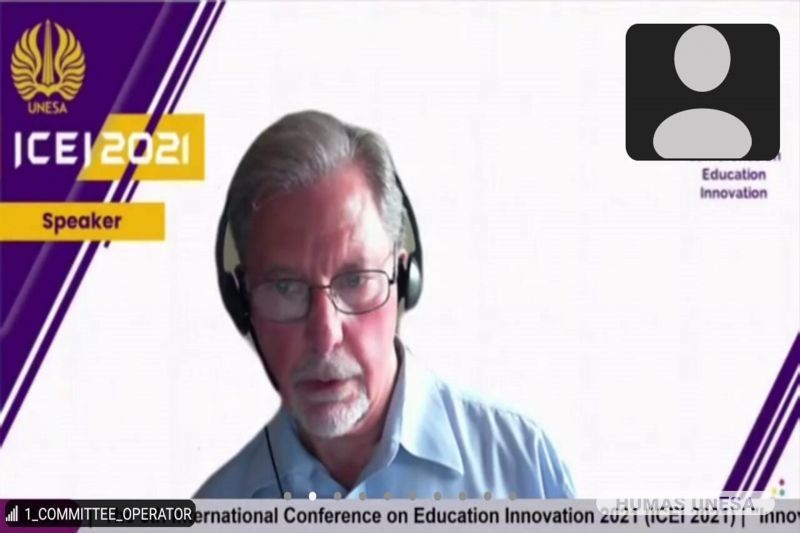
www.unesa.ac.id
Unesa.ac.id, SURABAYA-The UNESA Artificial Intelligence and Scientific Publication Unit held the International Conference on Educational Innovation (ICEI) on Saturday, (02/10/21). This conference has the theme “Innovation, Resiliency, and Transformation in Education: Learning from the Global Pandemic”.
One of the speakers presented was David D Curtis Associate Professor Flinders University, Australia. He explained that in developing 21st century innovation cycle interventions, there are stages that must be considered, namely, first, exploring problems or aspirations, because problems have causes. Aspiration arises when the desired result is not achieved. "There may not be a different problem, but there may be a sub-optimal achievement of the desired result," he said.
David also added that if in southern Australia, schools are required to have an imorodpian site (SIP), SIP is based on negotiated data on student achievement. It describes the goals and interventions designed to achieve these goals.
Second, problems have symptoms. This symptom is not a cause and is an indicator of a problem. These symptoms should be interrogated to find out the real cause. Third, identify problems and solutions. In this case, there is a key task which is to identify possible solutions to the perceived problem. "Record all solutions and critically examine them," he said.
Fourth, implementation. This stage involves several steps with preparation for the implementation of a logical step. In addition, the importance of effective professional learning in efforts to introduce innovation into educational settings. According to David, in professional learning and practice change, educators need to be convinced that the proposed innovation is working well.
Knowledge leads to changes in practice and which leads to improvements in student achievement. Many studies have shown that this has little impact. A more useful approach is to involve educators in experimenting with innovations with new methods.
"I ask educators to try this new approach in their own classrooms and to note any changes they see in student achievement," he said. He also explained about this new model, namely changes in student achievement that lead to changes in teacher skills as well as continuous changes in teacher practices and continuous improvement. (Madina/zam)
Share It On:






